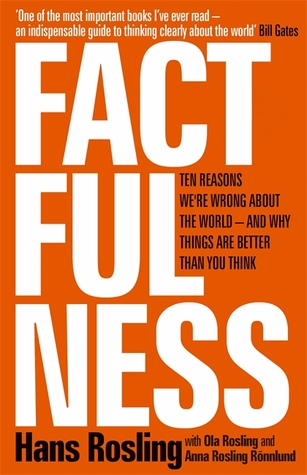In Factfulness Hans Rosling has offered us an engaging, easy-to-read book on a subject that could otherwise be tedious at best and perhaps even condescending. But Factfulness comes off as neither. Rosling feels chummy and relaxed as he puts the reader at ease in digesting a lot of information that might otherwise be a snoozer. His basic point is a good and worthy one – we don’t look at the world very accurately. We have some default notions that prohibit us from reading the facts accurately. We end up thinking the world is worse than it is.
It is a good point and needed observation. He makes it well. For that I give him high marks. Of course the point is that Rosling has landed on what no one else is seeing. He alone has the correct view of the data, the facts. “So, let me inform you!”
OK, fine. Experts are supposed to be able to do that sort of thing. But what might get lost in the friendly atmosphere of his information transfer is that Rosling himself does not dig deep enough in his quest for a right reading of the facts/data/statistics.
It has long been said that there are three kinds of lies: Black lies, white lies and … statistics. It’s all in how one reads them and how one uses them. And too often we do “use” them—to make a point we’ve already decided upon prior to engaging the facts.
There is something beyond the statistics—something beyond Factfulness—that determines how we read the data and interpret the statistics. Something that Rosling does not address. That something may lead us into blind assumptions, misreadings of what the facts mean, where they lead us, and how we extrapolate meaning from them.
Rosling, for all his Factfulness, repeatedly buries unsupported statements in the mix of his chummy pedagogical methods. If one is willing to notice them along the way and stop and wonder over them, one is left questioning where are the facts for this? Where’s the supporting statistics that tell us this?
As I continued past halfway and made my way toward two-thirds of the way through the book, these unsupported, but foundational assumptions kept piling up. And more and more they came off with a snarky, holier-than-thou tone. What began ever-increasingly to shine through was the unsupported moral assumptions through which Rosling reads the data he and his team has accumulated. It became clearer and clearer that Rosling—like the rest of us whom he accused of misreading facts for our own subjective, unexamined reasons—was doing the very same thing.
Rosling rightly cries for a reworking of our worldview. Worldview, he correctly cries, is the vital matter of our day. This must be shaped, he says, by the facts; there needs to be a Factfulness about our worldview. The trouble is he never seems to realize or if he does, he fails to call out, the fact that our worldview does not merely arise from the facts … it informs how we read the facts and the facts to which we assign the most weight. Sadly, in this regard, for the book’s many otherwise fine features, it stumbles and falls in the end. Not because Rosling has done a poor job at what he most obviously tries to do, but because he doesn’t push far enough back to examine his own underlying worldview that moves him to read the fact as he does.

Leave a Reply